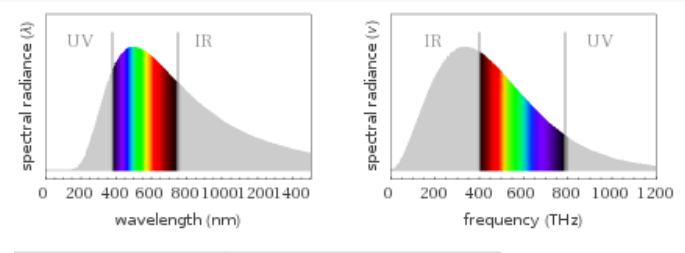Negative absorption does not represent emission as much as compliments emission. It’s a bit of a mind bender, but in general is the same result as negative RGB values; negatives “push” the resulting complimentary value across from it away from it.
While completely nonsensical in a practical sense, and compositors etc. must keep an eye out for negatives, there are practical and unfortunate reasons how and why they arise, and would indeed exist on reconstructed spectra from camera virtual primaries.
Unsurprisingly, this is part of the gamut mapping nightmare.
I don’t believe this is correct. All negative values are utter nonsense, and are an extreme nightmare in a pipeline. They can arise, but are almost always math anomalies or some horrible hack; negative light / radiometric energy doesn’t exist in our typical experience. Perhaps in some crazy nth dimensional parallel universe model…
Fluorescence is a conversion of energy. That is, certain energy spectra are absorbed and converted to an excitation of other spectra, at a lower energy state. Hence the law of energy conservation is maintained.
As you noted, it is essentially multiplication, and while the Beer Lambert laws and such cover the actual emulation of paint mixture and the weighting, it is indeed multiplication at the most basic level.
100% correct. ACES isn’t a magical unicorn, and with regard to spectral, it’s utterly problematic as a path forward.
The astute observer will recognize this as a pixel management problem, and it already plagues Blender.
There is no one-size-fits all solution here, hence the UI absolutely must be managed. When it isn’t managed, you get into the core issues that are already exceptionally problematic across the board within Blender as it currently exists.


